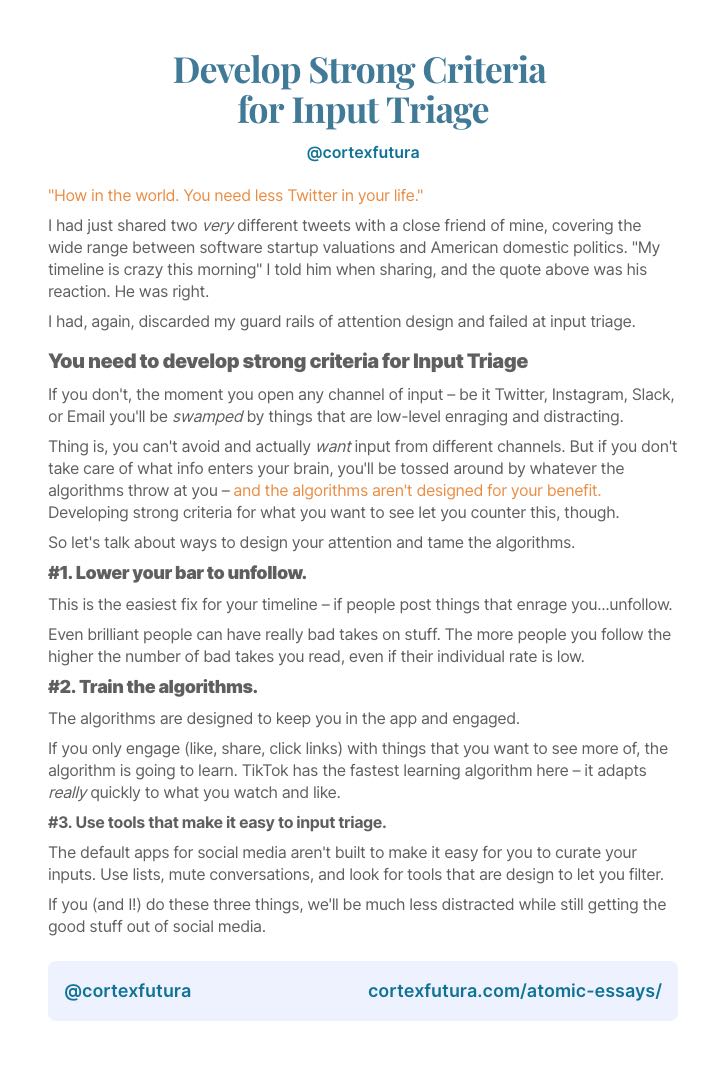Attention Design
Develop Strong Criteria for Input Triage
'How in the world. You need less Twitter in your life.' I had, again, discarded my guard rails of attention design and failed at input triage.

"How in the world. You need less Twitter in your life."
I had just shared two very different tweets with a close friend of mine, covering the wide range between software startup valuations and American domestic politics. "My timeline is crazy this morning" I told him when sharing, and the quote above was his reaction. He was right.
I had, again, discarded my guard rails of attention design and failed at input triage.
You need to develop strong criteria for Input Triage
If you don't, the moment you open any channel of input – be it Twitter, Instagram, Slack, or Email you'll be swamped by things that are low-level enraging and distracting.
Thing is, you can't avoid and actually want input from different channels. But if you don't take care of what info enters your brain, you'll be tossed around by whatever the algorithms throw at you – and the algorithms aren't designed for your benefit. Developing strong criteria for what you want to see let you counter this, though. So let's talk about ways to design your attention and tame the algorithms.
1. Lower your bar to unfollow.
This is the easiest fix for your timeline – if people post things that enrage you...unfollow. Even brilliant people can have really bad takes on stuff. The more people you follow the higher the number of bad takes you read, even if their individual rate is low.
2. Train the algorithms.
The algorithms are designed to keep you in the app and engaged. If you only engage (like, share, click links) with things that you want to see more of, the algorithm is going to learn. TikTok has the fastest learning algorithm here – it adapts really quickly to what you watch and like.
3. Use tools that make it easy to input triage.
The default apps for social media aren't built to make it easy for you to curate your inputs. Use lists, mute conversations, and look for tools that are design to let you filter.
If you (and I!) do these three things, we'll be much less distracted while still getting the good stuff out of social media.
Related Topics
Join the Cortex Futura Newsletter
Subscribe below to receive free weekly emails with my best new content, or follow me on Twitter or YouTube.
Join and receive my best ideas on note-taking, learning, and Knowledge Ops
